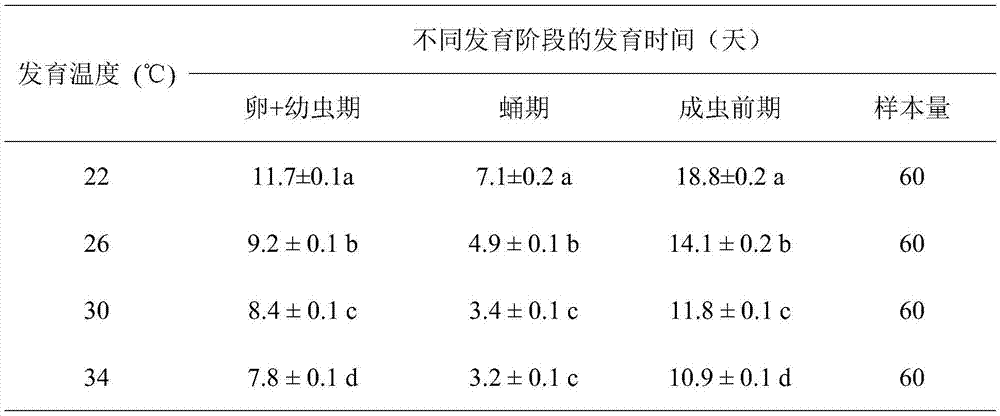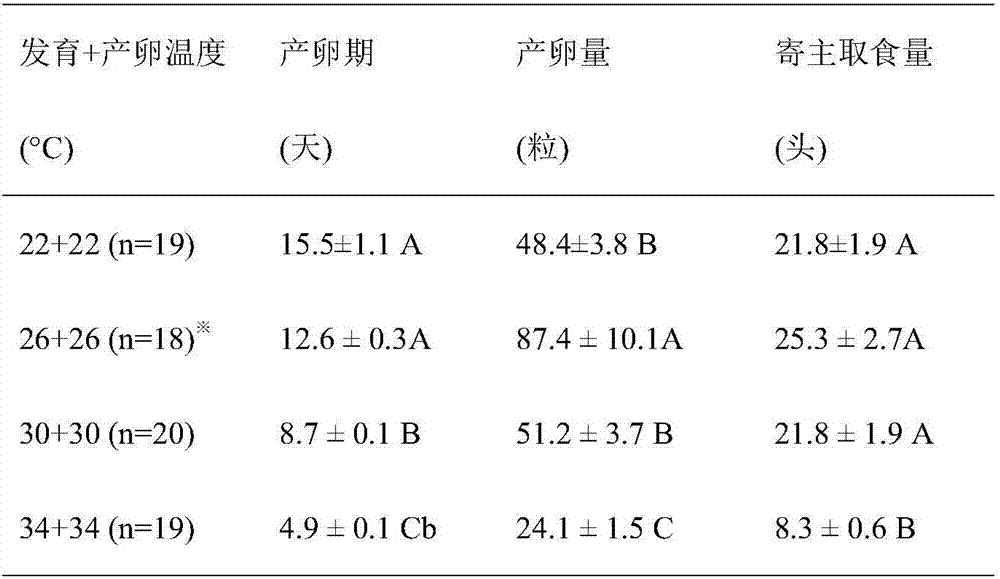Method for propagating haematopus aphid wasps rapidly by using temperature transition
A kind of technology of Aphid aphidus and Hai's, applied in animal husbandry, etc., can solve the problems of increasing the cost of rapid expansion of natural enemies, hindering the progress of natural enemy biological control projects, affecting the rate of natural enemy expansion, etc., to improve the efficiency of biological control and multiplication rate, improving parasitic and feeding efficiency, and shortening the development time
- Summary
- Abstract
- Description
- Claims
- Application Information
AI Technical Summary
Problems solved by technology
Method used
Image
Examples
Embodiment 1
[0024] Example 1 Artificial large-scale rearing of the Aphididae wasp
[0025] (1) Basic facilities
[0026] Insect breeding room: 4 rooms are required, which are respectively used for the cultivation of clean cotton seedlings, the breeding of whitefly populations, the maintenance of parasitic bee populations, and the rapid expansion of parasitic bees. The area depends on the scale of breeding, generally 10 to 20m 2 It is advisable that if the demand for parasitic bees is large, the number of insect culture rooms can be increased. The windows are equipped with stainless steel screens, and an exhaust fan is installed for ventilation and a 1.5 hp intelligent inverter air conditioner to control the temperature in the insect breeding room; different numbers of layered insect racks are placed in the insect breeding room according to the actual area size, and are controlled by KG316T microcomputer The control switch automatically controls the switching time of the light tubes on al...
Embodiment 2
[0049] Example 2 Changing the temperature of parasitoid nymph development and adult oviposition period improves the large-scale propagation rate of parasitoids
[0050] Parasitic wasps can generally be divided into pre-adult stage and adult stage, and pre-adult stage generally includes egg stage, nymph stage and pupal stage. In the early adult stage, the individual development of the parasitic wasp is mainly completed, and it has no ability to control the host; the adult stage mainly controls the host through feeding, parasitism and direct death. The ability of a parasitoid to control the host is generally reflected by its intrinsic growth rate (r), and the intrinsic growth rate mainly depends on the length of the parasitoid's pre-adult stage and the fecundity of the adult stage. Temperature can change the developmental rate of parasitoids and also affect their fecundity and feeding ability. Therefore, how to improve the pest control ability of parasitoids by changing the tem...
PUM
 Login to View More
Login to View More Abstract
Description
Claims
Application Information
 Login to View More
Login to View More - R&D
- Intellectual Property
- Life Sciences
- Materials
- Tech Scout
- Unparalleled Data Quality
- Higher Quality Content
- 60% Fewer Hallucinations
Browse by: Latest US Patents, China's latest patents, Technical Efficacy Thesaurus, Application Domain, Technology Topic, Popular Technical Reports.
© 2025 PatSnap. All rights reserved.Legal|Privacy policy|Modern Slavery Act Transparency Statement|Sitemap|About US| Contact US: help@patsnap.com



